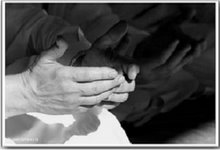
A Brief History
The astrolabe was invented in the Hellenistic world in either the first or second centuries BCE and is often attributed to Hipparchus. A marriage of the planisphere and dioptra, the astrolabe was effectively an analog calculator capable of working out several different kinds of problems in spherical astronomy. Theon of Alexandria wrote a detailed treatise on the astrolabe, and Lewis (2001) argues that Ptolemy used an astrolabe to make the astronomical observations recorded in the Tetrabiblos.
Brass astrolabes (Persian: اسطرلاب asterlab, ostorlab) were developed in the Islamic world, chiefly as an aid to navigation and as a way of finding the qibla, the direction of Mecca. The first person credited with building the astrolabe in the Islamic world is reportedly the 8th century Persian mathematician al-Fazari. The mathematical background was established by the Arab astronomer al-Battani in his treatise Kitab az-Zij (ca. 920 CE), which was translated into Latin by Plato Tiburtinus. The earliest surviving astrolabe is dated AH 315 (927/8 CE). In the Islamic world, astrolabes were used to find the times of sunrise and the rising of fixed stars, to help schedule morning prayers (salat). In the 10th century, al-Sufi first described over 1,000 different uses of an astrolabe, in areas as diverse as astronomy, astrology, horoscopes, navigation, surveying, timekeeping, prayer, Salah, Qibla, etc.
Arzachel (al-Zarqali) of al-Andalus constructed the first universal astrolabe instrument which, unlike its predecessors, did not depend on the latitude of the observer, and could be used from anywhere on the Earth. This instrument became known in Europe as the "Saphaea". The astrolabe was introduced to other parts of Europe via Islamic Spain in the 11th century. Early Christian recipients of Arab astronomy included Gerbert of Aurillac and Hermannus Contractus.
The English author Geoffrey Chaucer (ca. 1343–1400) compiled a treatise on the astrolabe for his son, mainly based on Messahalla. The same source was translated by the French astronomer and astrologer Pelerin de Prusse and others. The first printed book on the astrolabe was Composition and Use of Astrolabe by Cristannus de Prachaticz, also using Messahalla, but relatively original.
In 1370, the first Indian treatise on the astrolabe was written by the Jain astronomer Mahendra Suri.
The first known European metal astrolabe was developed in the 15th century by Rabbi Abraham Zacuto in Lisbon. Metal astrolabes improved on the accuracy of their wooden precursors. In the 15th century, the French instrument-maker Jean Fusoris (ca. 1365–1436) also started selling astrolabes in his shop in Paris, along with portable sundials and other popular scientific gadgets of the day.
In the 16th century, Johannes Stöffler published Elucidatio fabricae ususque astrolabii, a manual of the construction and use of the astrolabe. Four identical 16th century astrolabes made by Georg Hartmann provide some of the earliest evidence for batch production by division of labor.
At first mechanical astronomical clocks were influenced by the astrolabe; in many ways they could be seen as clockwork astrolabes designed to produce a continual display of the current position of the sun, stars, and planets. For example, Richard of Wallingford's clock (c. 1330) consisted essentially of a star map rotating behind a fixed rete.
Many astronomical clocks, such as the famous clock at Prague, use an astrolabe-style display, adopting a stereographic projection of the ecliptic plane.
In 1985 Swiss watchmaker Dr. Ludwig Oechslin designed and built an astrolabe wristwatch in conjunction with Ulysse Nardin.
The Hartmann astrolabe in Yale's collection. This beautiful instrument shows its rete and rule.An astrolabe consists of a hollow disk, called the mater (mother), which is deep enough to hold one or more flat plates called tympans, or climates. A tympan is made for a specific latitude and is engraved with a stereographic projection of circular lines of equal azimuth and altitude representing the portion of the celestial sphere which is above the local horizon. The rim of the mater is typically graduated into hours of time, or degrees of arc, or both. Above the mater and tympan, the rete, a framework bearing a projection of the ecliptic plane and several pointers indicating the positions of the brightest stars, is free to rotate. Some astrolabes have a narrow rule or label which rotates over the rete, and may be marked with a scale of declinations.
The rete, representing the sky, has the function of a star chart. When it is rotated, the stars and the ecliptic move over the projection of the coordinates on the tympan. A complete rotation represents the passage of one day. The astrolabe is therefore a predecessor of the modern planisphere.
On the back of the mater there will often be engraved a number of scales which are useful in the astrolabe's various applications; these will vary from designer to designer, but might include curves for time conversions, a calendar for converting the day of the month to the sun's position on the ecliptic, trigonometric scales, and a graduation of 360 degrees around the back edge. The alidade is attached to the back face. When the astrolabe is held vertically, the alidade can be rotated and a star sighted along its length, so that the star's altitude in degrees can be read ("taken") from the graduated edge of the astrolabe; hence "astro" = star + "labe" = to take.






1 comment:
That is very interesting, You are an overly skilled blogger.
I have joined your feed and look forward to in search of extra
of your magnificent post. Also, I have shared your website in my
social networks
Here is my blog :: chwilowka *http://chwilowki365.evenweb.com*
Post a Comment